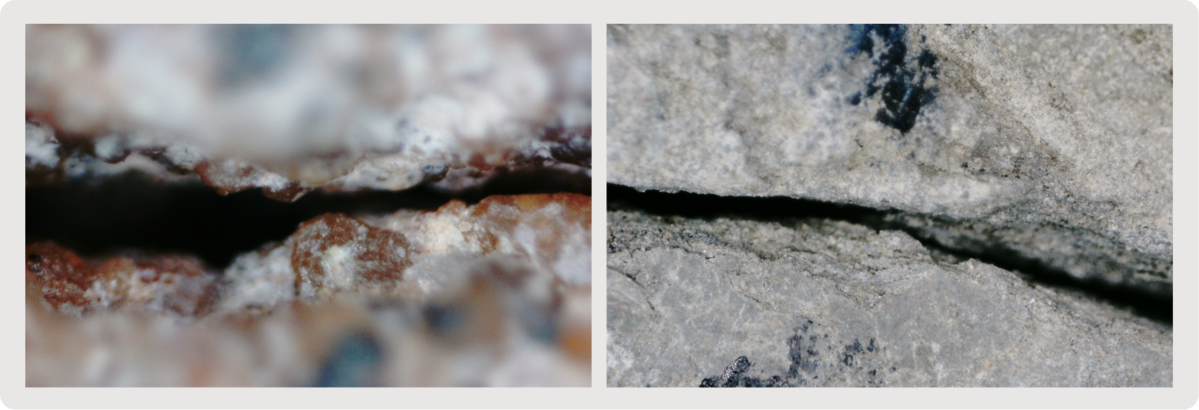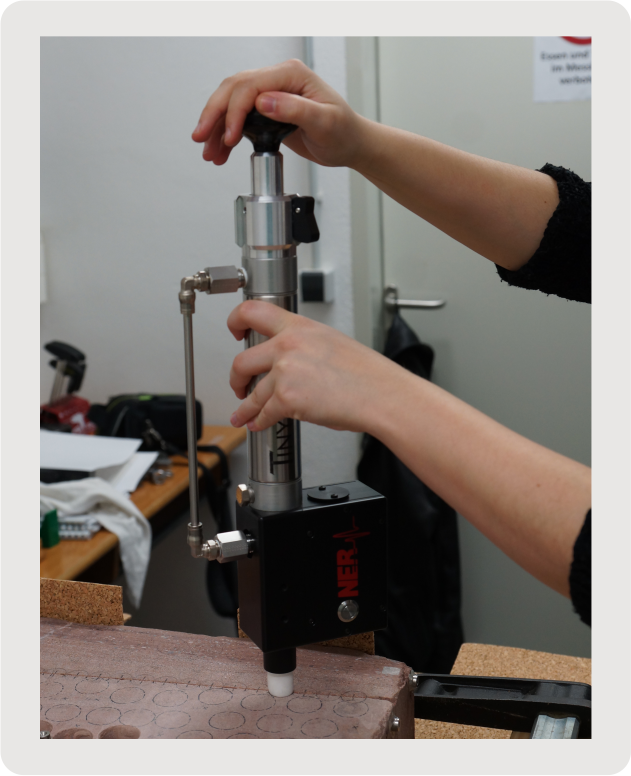Fracture-Lab
In many places, permeability in the Earth's crust is determined by fracture networks, as they increase the effective permeability of rocks by several orders of magnitude. Fluid flow in individual fractures is controlled by key parameters such as fracture opening width and fracture roughness. For many geotechnical applications the transport of fluids and gases in fractures is of great interest: On the one hand, in connection with the usability and capacity of storage rocks (reservoir geology and geothermal energy), on the other hand, with regard to safety-relevant aspects (tunnel construction, geological risks, repository research). A central focus of the Department of Engineering Geology is therefore the development of methods for the practical, quantitative and precise determination of fissure parameters.
Current research projects:
Surface roughness and anisotropy of natural rock joints,KIT Center MathSEE (Mathematics in Sciences, Engineering, and Economics)
Numerical modeling of hydromechanical processes in rock fractures,Helmholtz Association of German Research Centres (HGF), Geoenergy portfolio
Our methods for the determination of relevant fracture properties are suitable for a wide range of fracture types, both for field applications and for drill core analyses in the laboratory:
- For the determination of mechanical fracture opening widths, we work with a digital microscope camera, which provides detailed images with a magnification factor of up to 500x. On the basis of the defined magnification factor, the depicted fracture segment can then be digitally measured and statistically analysed with a resolution of up to 10 µm. The mechanical opening width describes the average distance between the two fissure surfaces.
- With the aid of a portable air permeameter ("TinyPerm 3"), hydraulic gap widths in the range between 20 and 1000 µm can be determined directly. The hydraulic gap opening width is a virtual quantity that describes the opening width of a gap that can effectively be used for fluid flow. As the hydraulic opening width is directly related to the gap permeability, it is a key parameter for many geoscientific questions.
- Contactless imaging methods such as 3D laser scanning and Dense Image Matching (DIM) are available for the analysis of the cleft roughness. The resulting three-dimensional images of the fissure surfaces (point clouds) form the basis for numerical flow simulations. The surface roughness essentially determines the formation of preferential flow paths and the flow conditions in the gap. DIM combines photogrammetry and computer vision and requires only photos of an object from different angles. While rock samples of variable size can be precisely measured in the laboratory using 3D laser scanning, DIM is also suitable for the characterisation of larger discontinuities on a metre scale due to suitable standards for terrain applications.


